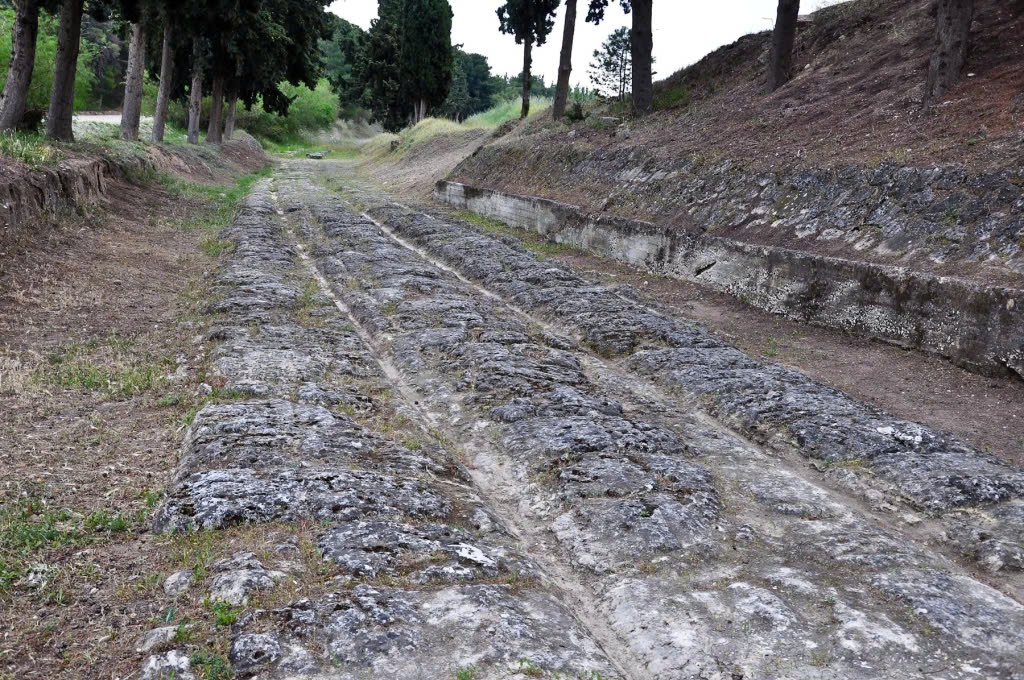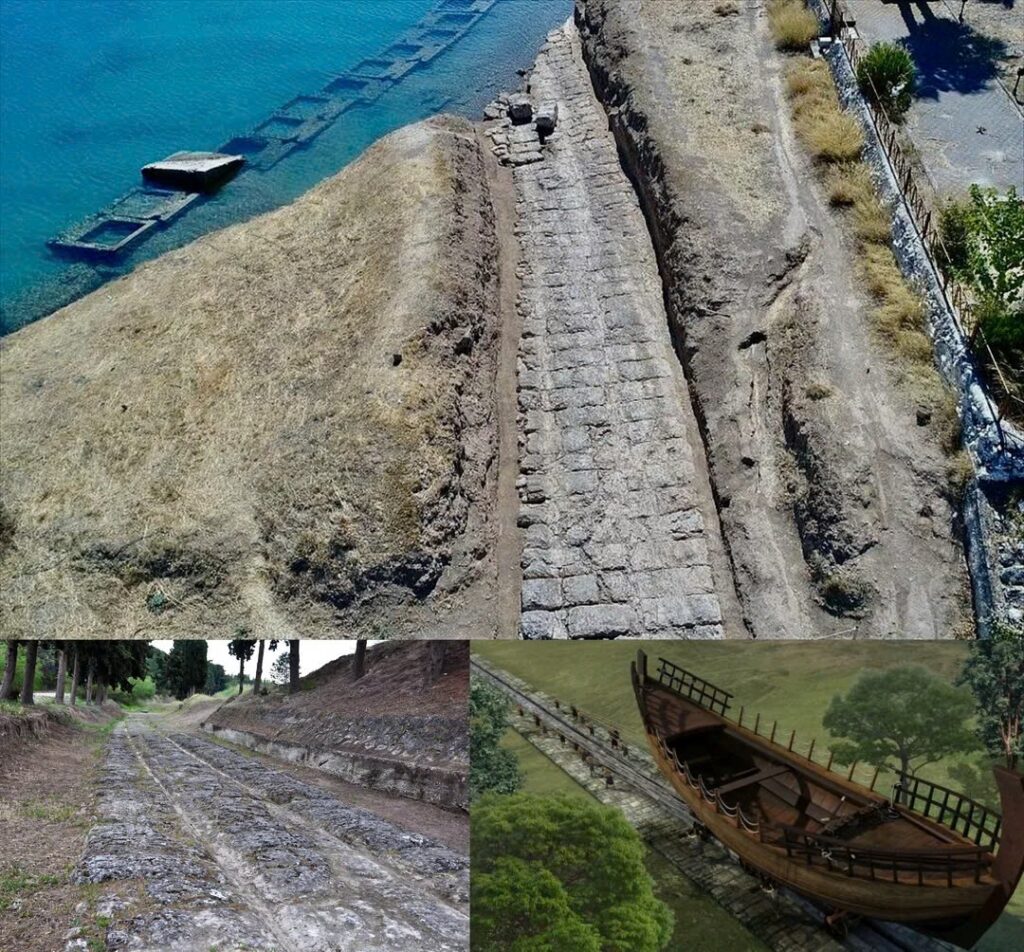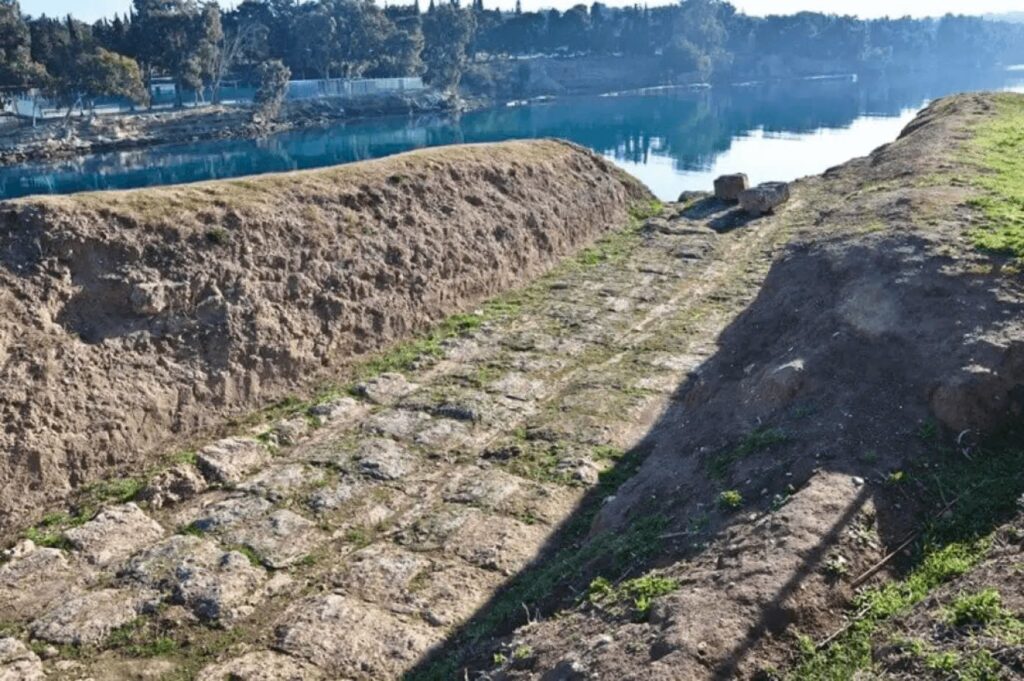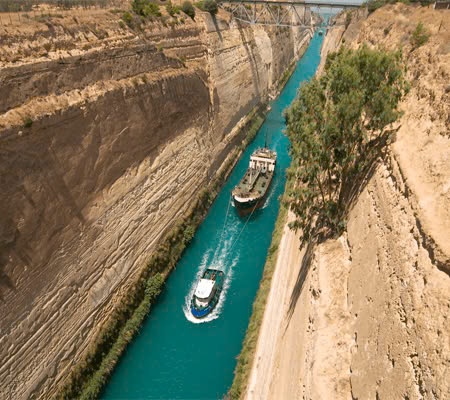An Engineering Marvel of Antiquity

In ancient times, Greek engineers devised a revolutionary solution to a perilous maritime challenge. Ships traveling between the Ionian and Aegean Seas faced a treacherous 340-kilometer journey around the Peloponnese peninsula. To bypass this dangerous route, the Greeks constructed the Diolkos, a stone-paved road that allowed vessels to be transported overland across the Isthmus of Corinth.
The Father of Railways

The Diolkos featured grooved tracks, earning it recognition as one of the earliest known railways in history. Dr. Georgios Spyropoulos, assistant director of the Corinthian Ephorate of Antiquities, describes it as “the first systematic attempt to facilitate the portage of merchandise and warships” between the two gulfs.
A Feat of Ancient Engineering

Remnants of this technological wonder can still be seen near Corinth today. The process of transporting ships across the Diolkos was a marvel of engineering and human strength:
- Ships were pulled up stone ramps by slaves using massive ropes.
- Vessels were placed on sturdy wooden frames and stripped of masts and other removable parts.
- Using winches, ships were rotated 90 degrees to align with the Diolkos.
- The vessels were then placed on iron undercarriages with enormous wheels.
- These wheeled platforms carried the ships along the grooved stone pathway to the opposite end of the isthmus.
Legacy and Modern Counterpart

The Diolkos operated for centuries, showcasing the ingenuity of ancient Greek engineering. Its legacy inspired later attempts to create a waterway across the isthmus, including projects considered by Julius Caesar and Alexander the Great.
The Corinth Canal: Realizing an Ancient Dream

In 1893, after over 2,000 years of aspiration, the Corinth Canal was finally completed. This modern waterway, cutting through limestone, measures between 21 and 25 meters wide. While it fulfilled an ancient vision, the canal has faced challenges:
- Erosion and landslides have sometimes obstructed passage.
- The narrow width limits its use by larger modern vessels.
- Strong tides make navigation difficult.
Today, the Corinth Canal primarily serves small pleasure craft and tourist boats, standing as a testament to the enduring human desire to overcome geographical challenges through innovation.

